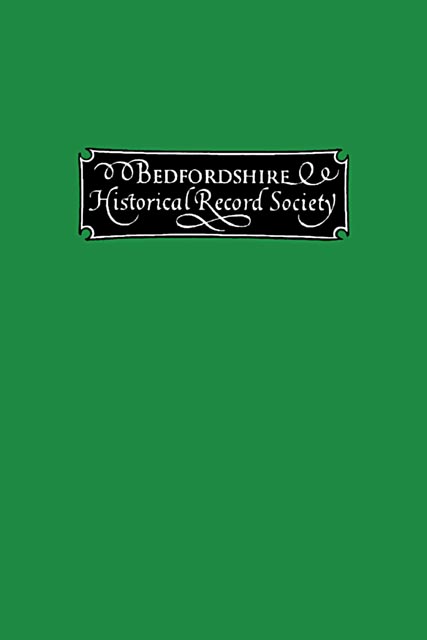Book contents
- Frontmatter
- Contents
- Symbols used in transcription
- Abbreviations in Common Use
- Reproduction of Part of Inventory No. 19
- Transcription of the Reproduction
- Jacobean Household Inventories
- Recusancy and Nonconformity in Bedfordshire
- Some Recent Accessions to The County Record Office
- General Index to the Inventories
- General Index to ‘Recusancy and Nonconformity’
Recusancy and Nonconformity in Bedfordshire
Illustrated By Select Documents Between 1622 and 1842
Published online by Cambridge University Press: 14 July 2023
- Frontmatter
- Contents
- Symbols used in transcription
- Abbreviations in Common Use
- Reproduction of Part of Inventory No. 19
- Transcription of the Reproduction
- Jacobean Household Inventories
- Recusancy and Nonconformity in Bedfordshire
- Some Recent Accessions to The County Record Office
- General Index to the Inventories
- General Index to ‘Recusancy and Nonconformity’
Summary
Documents illustrative of Recusancy and Nonconformity might be selected latitudinally, surveying the whole county at a given date or short period, or longitudinally, to show the good and ill fortune of the Dissenters throughout a longer period. The second method, which has here been chosen, necessitates the selection of representative parts of collections of documents, unless the resultant mass is to become too unwieldy for a volume like the present. But the choice had to be made, and has been justified by the way in which information from one set of documents has unexpectedly corroborated or corrected the evidence from other sources. And it prepares the way for the subsequent examination and analysis of the county-wide extent of Recusancy and Nonconformity and the study of their growth. Roman Catholic Recusancy and Protestant Nonconformity, so unlike in their way of worship and in their attitude to authority, were alike in their refusal to accept the orders of the state in the realm of belief and the ritual of worship. In this they played a vital part in the securing of English liberty and toleration. The national outline of the story ought to be checked by the examination of local records.
Europe had grown so accustomed to unity in religion and the suppression of heresy, that the Reformation brought a choice between forms of Christianity not to the individual, but to the state, whose choice, or whose sovereign's choice, became the religion of the nation. But the individual conscience did not always prove amenable to the sovereign's choice or the nation's choice, and when some individuals claimed what amounted to liberty of private judgment in matters religious, such refusal to accept state-decisions and stateorders seemed to the government little short of sedition. And too often religious recusancy and political scheming, or even rebellion, did go hand-in-hand. Some Catholics planned to remove a ‘heretical’ government by gunpowder. Some Puritans took up arms against their king. Some Anglicans took up arms against the English Republic. Such actions were difficult to forget, and religious persecution in Stuart England was usually prompted by political fear. Recusants and Dissenters, by the leaders of their opponents, were considered to be suspect citizens, who could not be trusted to share the management of state or even of municipal business.
- Type
- Chapter
- Information
- The Publications of the Bedfordshire Historical Record Society , pp. 145 - 229Publisher: Boydell & BrewerFirst published in: 2023



